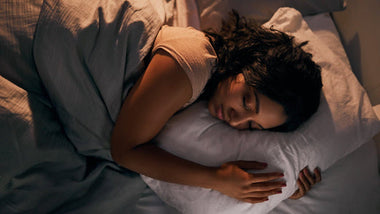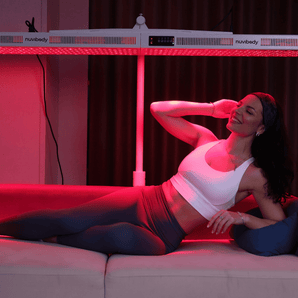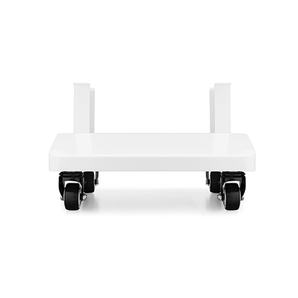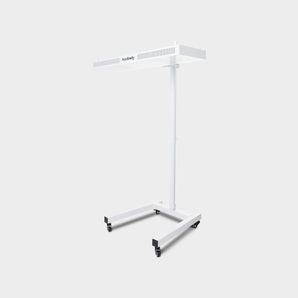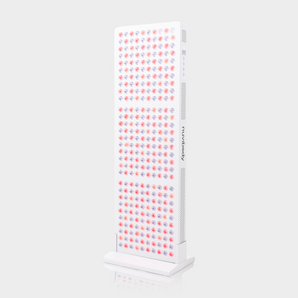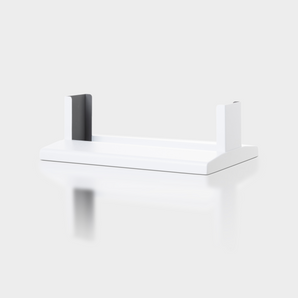You may have seen memes, read articles, or heard about it from friends, and you may have even seen it on Tucker Carlson's show recently — " Red light your balls for higher testosterone," also known as “testicle tanning,” according to Carlson. Of course this raises questions. In this article we will answer all your most important questions about Red Light Therapy (RLT) for increasing testosterone levels.
Red light therapy may be something you heard about from your girlfriend, wife, or people like Andrew Huberman or Tony Robbins. This form of exercise therapy is becoming increasingly popular thanks to athletes in the UFC, NFL, PGA, and on Olympic teams who all use light therapy devices as part of their training, recovery, and health routine. There's a reason why all the experts have been using this technology for decades - ever since NASA discovered the technology in the 1980s when they sent astronauts to space. [1] Since then, red light has been studied in more than 1,000 clinical trials.
If you're a man struggling with low energy, stamina, brain fog, or other symptoms of low testosterone, or just want to take your health routine to the next level, read on to see what science says about red light therapy and its benefits. best way to use it to achieve certain health goals.
The testosterone epidemic
Over the past decade, it has become increasingly clear that testosterone plays an important role in men's health and vitality.
Testosterone is the most important sex hormone in men and is responsible for many things, including: [2]
- Regulating the libido
- Development of the penis and testicles
- Deeper voice during puberty
- Fat distribution
- Muscle size and strength
- Bone growth and strength
- Production of sperm
- Production of red blood cells
The amount of testosterone each man produces varies greatly, but it is known that, in general, as men age, testosterone production naturally decreases - this is a fact. And a drop in testosterone can lead to several problems, such as: [3]
- Reduction of body and facial hair
- Decrease in muscle mass
- Low libido
- Reduced sperm quality
- Impotence
- Small testicles
- Increase in breast size
- Hot flashes
- Depression
- Irritability
- Brittle bones

Why is this such a problem?
While some of these things are to be expected as you get older, the real problem we face today is the acceleration of testosterone decline in young men and the ages at which this happens.

If you look at the numbers you will see the acceleration (pictured above).
The average man over the age of 30 experiences an annual decrease in his natural testosterone production of 1-2%. In other words, the average American man aged 65 in 2004 (the last year covered by the study) had about 17% less testosterone than his counterpart in 1987 [4].
Some other data about testosterone:
- Recent studies have suggested that around 40% of men report testosterone deficiency to their GP. [5]
- Men over the age of 24 experience rapid drops in testosterone. [5]
- Another study found that men with lower testosterone levels were more likely to die from the coronavirus. [6]
- According to Healthline, about 4% of men under the age of 60 have low testosterone levels, while 11% of men over the age of 60 have low levels of this important hormone. [4]

Top reasons for low testosterone.
- Modern Lifestyle: Modern life and artificial lifestyle are the main culprits.
- Obesity: It is well known that being overweight leads to reduced testosterone production. This is partly because fat cells begin converting free testosterone into estrogen.
- Low levels of vitamin D: Insufficient vitamin D increases the risk of low testosterone, as well as chronic diseases.
- Endocrine disruptors: 3,000 new materials are introduced into plastics, chemicals and manufacturing every year with very little regulatory oversight. These chemicals and materials have the power to disrupt the production, transport and release of natural hormones, including testosterone. [9]
- Other reasons for a low T level:
- Stress
- Lack of sleep
- Health problems, such as diabetes or obesity
- Side effects of medication
- Genetics
- Injury to the testicles
- Tumors in the pituitary gland or hypothalamus (areas of the brain that regulate hormones)
What are the symptoms of low testosterone?
For men today, the depressing reality is that many struggle to maintain not only normal, but even minimally healthy levels of this life-enriching hormone.
Men over the age of 24 experience rapid declines in testosterone production, leading to a decrease in libido, hair loss, fatigue, brain fog, the inability to gain muscle (or lose weight), and depression [5].
This is what low testosterone looks and feels like in the body:
- Low libido, possibly even impotence
- Low sperm count, possibly even infertility
- Reduction of the testicles
- Reduced muscle mass
- Decrease in facial and body hair (hair loss)
- Development of breast tissue
- Weak or brittle bones
- Papery appearance of the skin
- Decreased concentration and brain fog
- Irritability, anxiety and depression
How can you maintain healthy testosterone levels?
While this may all seem quite daunting, there is hope. It is possible to invest time and effort in maintaining optimal testosterone levels.
To maintain healthy testosterone levels, it is essential that men are physically active and eat a healthy diet. Sufficient sleep is also very important.
Although the body can produce testosterone on its own, it may sometimes need a natural boost to maintain levels within a healthy range. Testosterone supplementation may be beneficial for men with low testosterone levels or symptoms of low T.
However, there is an even better alternative than supplements: red light therapy. More and more men are adding red light therapy to their routine to naturally increase their testosterone levels.
What is red light therapy and how can it stimulate testosterone?
The term "red light therapy" refers to the procedure that uses two extremely specific wavelengths of light, which are naturally emitted by the sun. This concerns red light (at 660 nanometers) and near-infrared light (at 850 nanometers), which are aimed directly at your body and cells. However, the sun also radiates other wavelengths, hence the use of Red Light Therapy.
These two wavelengths of light are very unique because they have a "biological response" in your body - specifically in each of your cells.

Red light therapy has been shown to improve testosterone secretion by increasing the production of ATP in the Leydig cells of the testes. [10] ATP refers to an energy-carrying molecule that is present in the cells of all living things, and it works to provide energy for a variety of cellular processes.
The use of red light therapy for sexual health.
Research on applications of red light therapy in the field of sexual health is relatively limited in men and virtually non-existent in women. However, an important human study suggests that red light therapy can increase testosterone levels and sexual satisfaction. [11]
In addition, several studies in animals suggest that red light therapy may affect Leydig cells – the body's sperm producers, which are located in the testes.
Although testosterone is mainly produced in the testes (Leydig cells) and is also produced in smaller amounts in the adrenal glands, cholesterol is converted into testosterone in these organs through a process called steroidogenesis. Recent studies of mitochondrial function in Leydig cells show that "mitochondria must be energized, polarized, and actively respiring to support Leydig cell steroidogenesis."
Studies suggest that wavelengths of red and near-infrared light can stimulate Leydig cells – the cells responsible for the natural production of testosterone in the testes. The improved energy production can help to increase testosterone hormone naturally.
Think of it this way: the red light "wakes up" the inactive cells that have become lazy because they see no reason to be turned "on" thanks to the constant low levels of stress in your life. Although stress levels are low, they are still present and affect your cells.
Additional studies, such as a 2016 study at the University of Siena, one of Italy's universities of law and medicine, suggest that light therapy interacts with the pineal gland in the brain, which plays an important role in human reproduction. [10]
Red light therapy and testosterone production
As we saw above, irradiation with red and near-infrared light optimizes the use of oxygen within the mitochondria to synthesize energy in the form of ATP. Red light therapy can therefore aid in steroidogenesis and ultimately the healthy production of testosterone. [12]
Red light therapy has the potential to affect the body's sperm producers located in the testes. Clinical studies have shown that red light therapy can increase sperm efficiency and influence the level of sexual satisfaction in both men and women. Additionally, several studies have shown significant improvements in male fertility and sperm mobility that can impact sexual performance. All these clinical studies have shown that red light therapy is safe for male genitals and does not cause DNA damage.
Red light therapy can also improve the quality of life for people with low testosterone by alleviating some of the symptoms. In fact, some of the many proven benefits of red light therapy include:
- Increased muscle mass and strength
- Better sports performance
- Improved cognitive function
- Better mood
- Sleep better
- Hair growth
Conclusion: Red light therapy for testosterone increase
From around age 30, testosterone levels in men begin to naturally decline, and for some men this can start even earlier.
Men who want to increase their testosterone often first consider TRT or other pharmacological approaches. Unfortunately, these approaches can come with a variety of side effects that can cause all kinds of problems.
But what if we told you that you can achieve these desired benefits in a simple and natural way, without the negative side effects? This is possible by incorporating red light therapy into your daily routine.
Red and near-infrared wavelengths have been proven to stimulate photoreceptor proteins in the testes, leading to increased testosterone production. Studies have also shown the potential of low-power light therapy and its influence on the pineal gland in the brain, which has a significant impact on reproduction and general well-being.
Red or infrared light from an LED source (600-950 nm) has been extensively studied for use on the male reproductive system and in men who want to increase their testosterone levels naturally. The most researched form of red light therapy is delivered by LEDs and lasers. Visible red light (600-700 nm) appears to be optimal for increasing testosterone levels naturally.
All the Nuvibody red light therapy devices provide the wavelengths you need to increase your testosterone levels naturally.



Citations:
[1] Cotler, Howard B. “A NASA discovery has current applications in orthopedics.” Current orthopedic practice vol. 26.1 (2015): 72-74. doi:10.1097/BCO, https://www.ncbi.nlm.nih.gov/pmc/articles/PMC4272231/
[2] https://www.nih.gov/news-events/nih-research-matters/understanding-how-testosterone-affects-men
[3] https://www.health.harvard.edu/medications/testosterone--what-it-does-and-doesnt-do
[4] Healthline, Gotter A and Rogers G, MD. Low Testosterone in Men. Healthline. July 2016.
[5] https://www.nih.gov/news-events/nih-research-matters/understanding-how-testosterone-affects-men
[6] European College of Neuropsychopharmacology (ECNP). “Lack of interest in sex successfully treated by exposure to bright light.” ScienceDaily. ScienceDaily, September 18, 2016.
[7] Golan, Ron et al. “Age-related testosterone decline is due to decline of both testicular and hypothalamic-pituitary function.” https://www.ncbi.nlm.nih.gov/pmc/articles/PMC4816459/
[8] Stanworth, Roger D, and T Hugh Jones. “Testosterone for the aging male; current evidence and recommended practice.” Clinical interventions in aging vol. 3.1 (2008): 25-44. doi:10.2147/cia.s190, https://www.ncbi.nlm.nih.gov/pmc/articles/PMC2544367/
[9] Jeng, Hueiwang Anna. “Exposure to endocrine disrupting chemicals and male reproductive health.” Frontiers in public health vol. 2 55. 5 Jun. 2014,https://www.ncbi.nlm.nih.gov/pmc/articles/PMC4046332/
[10] Vladimirovich Moskvin S., Ivanovich Apolikhin O. Effectiveness of low level laser therapy for treating male infertility. Biomedicine (Taipei). June 2018; 8(2):7, https://www.ncbi.nlm.nih.gov/pmc/articles/PMC5992952/
[11] Ban Frangez H., Frangez I., Verdenik I., Jansa V., Virant Klun I. Photobiomodulation with light-emitting diodes improves sperm motility in men with asthenozoospermia. Laser in Medical Science, 2015 Jan;30(1):235-40., https://pubmed.ncbi.nlm.nih.gov/25204851/
[12] Salman Yazdi, R., Bakhshi, S., Jannat Alipoor, F. et al. Effect of 830-nm diode laser irradiation on human sperm motility. Lasers Med Sci. (2014) 29: 97, https://pubmed.ncbi.nlm.nih.gov/23407899/



